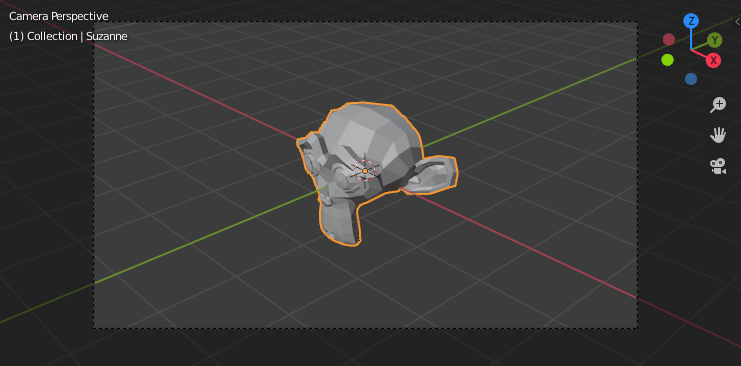Camera View(カメラビュー)

Camera View(カメラビュー) のようす。
The Camera view shows the current scene as seen from the currently active camera's view point.
The Camera view can be used to virtually compose shots and preview how the scene will look when rendered. The rendered image will contain everything within the dashed line.
参考
Camera Settings for details how camera settings are used for display & rendering.
ヒント
The active camera can be selected while in camera view using the camera frame (assuming the object isn't hidden).
アクティブカメラからのビュー
参照
- Mode(モード)
全てのモード
- Menu(メニュー)
- ショートカットキー
Numpad0
This switches the view to the active camera. The triangle above the camera will become shaded when active.
アクティブカメラを設定
参照
- Mode(モード)
Object Mode(オブジェクトモード)
- Menu(メニュー)
- ショートカットキー
Ctrl-Numpad0

アクティブカメラ (左) は、上の三角形が塗りつぶされて表示されます。
This is the camera currently used for rendering and when viewing from the camera.
This sets the current active object as the active camera & switches to the camera view.
The active camera can also be set in the Scene tab of the Properties.
注釈
The active camera, as well as the layers, can be specific to a given view, or global (locked) to the whole scene. See Local Camera.
カメラの切り替えアニメーション
By default a scene contains one camera. However, a scene can contain more than one camera, but only one of them will be used at a time. So you will only need to add a new camera if you are making cuts between them. See Animating Cameras.
Frame Camera Bounds(カメラの境界に収める)
参照
- Mode(モード)
全てのモード
- Menu(メニュー)
- ショートカットキー
Home
カメラビューを3D Viewport(ビューポート)の画面領域の中央に配置し、領域の境界内に収まるようにビューのサイズを変更します。